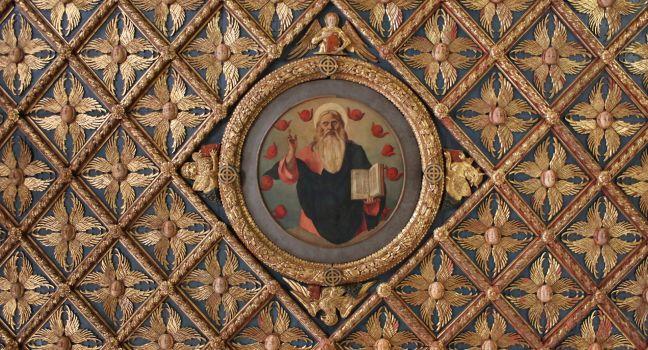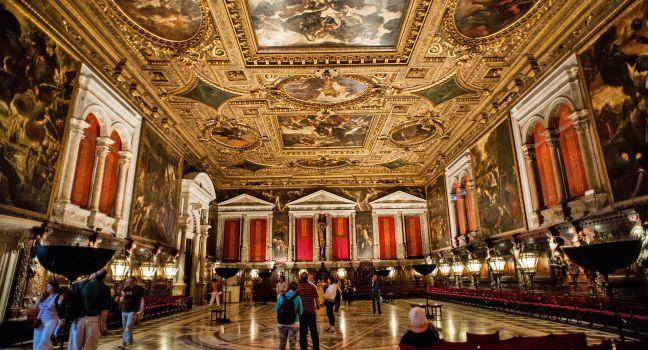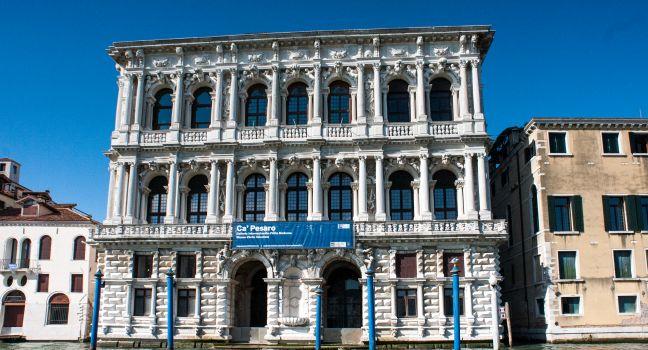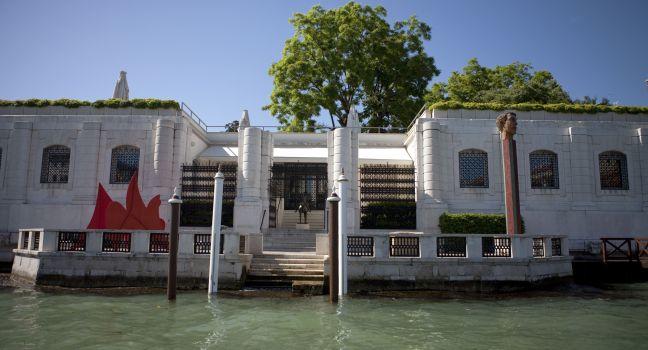Gallerie dell'Accademia

The greatest collection of Venetian paintings in the world hangs in these galleries founded by Napoléon back in 1807 on the site of a religious complex he had suppressed. The galleries were carefully and subtly restructured between 1945 and 1959 by the renowned Venetian architect Carlo Scarpa.
Jacopo Bellini is considered the father of the Venetian Renaissance, and in Room 2 you can compare his Madonna and Child with Saints with such later works as Madonna of the Orange Tree by Cima da Conegliano (circa 1459–1517) and Ten Thousand Martyrs of Mt. Ararat by Vittore Carpaccio (circa 1455–1525). Jacopo's more accomplished son Giovanni (circa 1430–1516) attracts your eye not only with his subject matter but also with his rich color. Rooms 4 and 5 have a good selection of his madonnas. Room 5 contains The Tempest by Giorgione (1477–1510), a revolutionary work that has intrigued viewers and critics for centuries. It is unified not only by physical design elements, as was usual, but more importantly by a mysterious, somewhat threatening atmosphere. In Room 10, Feast in the House of Levi, commissioned as a Last Supper, got Veronese summoned to the Inquisition over its depiction of dogs, jesters, and other extraneous and unsacred figures. The artist responded with the famous retort, "Noi pittori ci prendiamo le stesse libertà dei poeti e dei pazzi" ("We painters permit ourselves the same liberties as poets and madmen"). He resolved the problem by simply changing the title, so that the painting represented a different, less solemn biblical feast. Don't miss the views of 15th- and 16th-century Venice by Carpaccio and Gentile Bellini, Giovanni's brother—you'll easily recognize places you have passed in your walks around the city.
Booking tickets in advance isn't essential but helps during busy seasons and costs only an additional €1.50. A free map notes art and artists, and the bookshop sells a more informative English-language booklet. In the main galleries a €4 audio guide saves reading but adds little to each room's excellent annotation. As of late 2021, a valid certificate of vaccination against COVID-19 is required for visitors to all Italian museums; check with the gallery to verify this is still required on the day you wish to visit.






